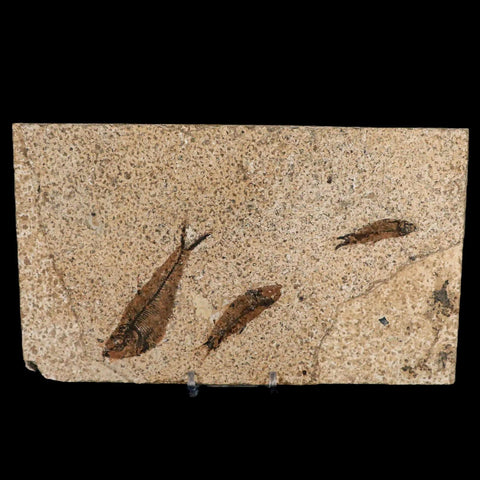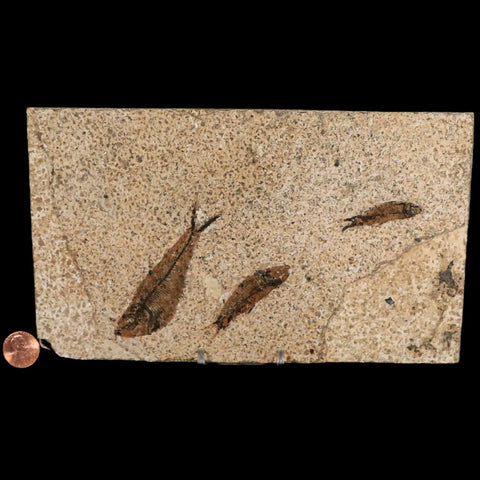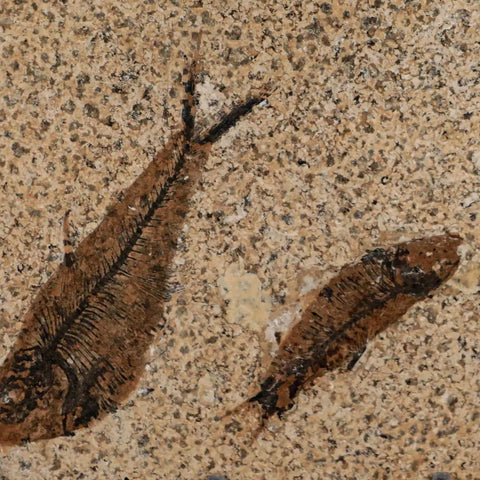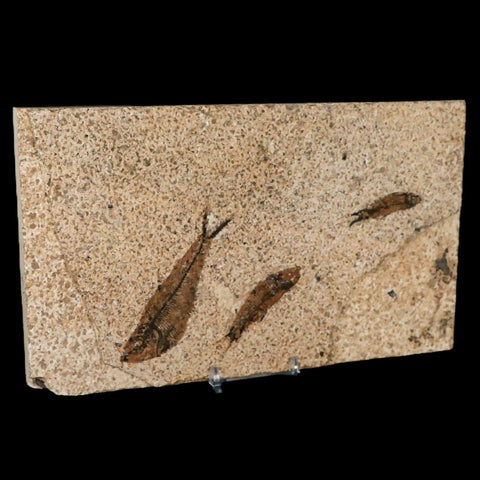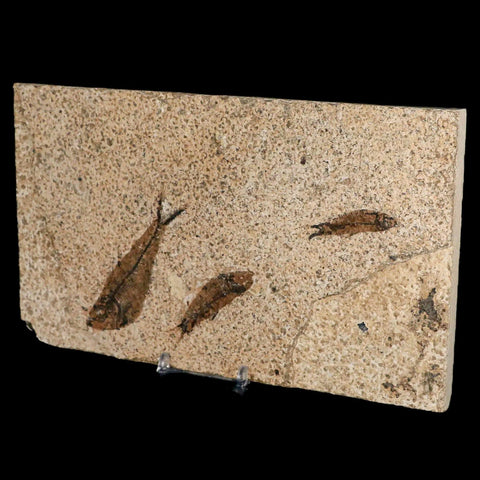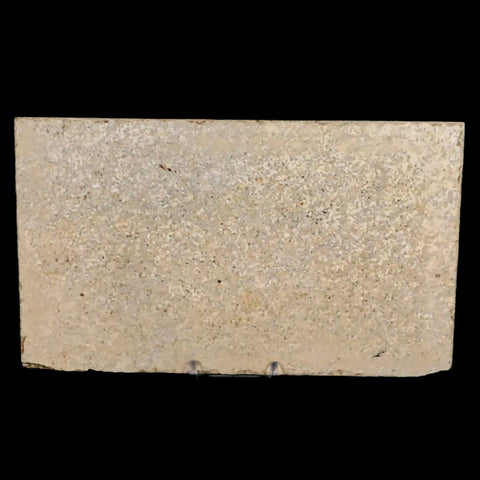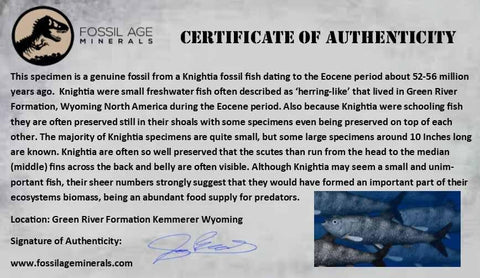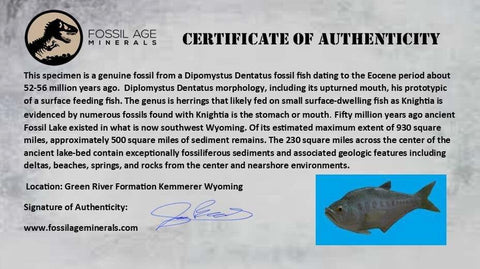3" Three Diplomystus And Knightia Fossil Fish Green River FM WY Eocene Age COA
Location: Kemmerer, Wyoming
Weight: 1 Pound 11.8 Ounces
Dimensions: 8.4 Inches Long, 5 Inches Wide, 0.6 Inches Thick (Plate)
Fish One is: 3.2 Inches Long, 1.2 Inches Wide
Fish Two is: 2.1 Inches Long, 0.6 Inches Wide
Fish Three is: 1.5 Inches Long, 0.5 Inches Wide
Comes with a Certificate of Authenticity.
Comes with a Free Stand.
The item pictured is the one you will receive.
This is a genuine fossil.
50 million years old, Eocene age
Knightia Eocaena is the most common fish in Fossil Lake and may be the most commonly articulated vertebrate fossil in the world. It is Wyoming's State Fossil. Length: up to 25 cm (10 in).
Around 50 million years ago, during the Eocene Epoch, a vast freshwater body known as Fossil Lake existed in what is now southwest Wyoming. At its peak, the lake covered nearly 930 square miles, though only about 500 square miles of sediment remain today. The central 230-square-mile portion of the lakebed is particularly significant, preserving exceptionally fossil-rich sediments alongside geologic features such as deltas, beaches, mineral springs, and nearshore rocks.
The unique chemistry of Fossil Lake prevented decay and scavenging, allowing organisms to be preserved intact while millimeter-thick layers of limestone slowly accumulated. These laminated deposits contain the highest concentration of fossil fish in the world, along with other aquatic life and geological features, making Fossil Lake the most complete Paleogene record of a freshwater lake ecosystem.
Since their discovery in the 1870s, numerous perfectly preserved fossil fish have been recovered from Fossil Lake. Alongside these fish, the laminated limestone preserves a complete ancient aquatic ecosystem, including cyanobacteria, plants, insects, and crustaceans such as shrimp, crawfish, and ostracods, as well as amphibians (frogs and primitive salamanders), alligators, turtles, birds, and mammals, including the oldest known pantolestid, an otter-like animal.
The surrounding subtropical terrestrial ecosystem is also represented by rare fossils, including an early horse, snakes, lizards, bats (two species), birds, an apatemyid (tree-dwelling insectivore), a miacod (primitive carnivore), insects, and more than 325 species of fossilized leaves, seeds, and flowers. Together, these discoveries provide an extraordinary view of both aquatic and terrestrial life during the Eocene Epoch.




